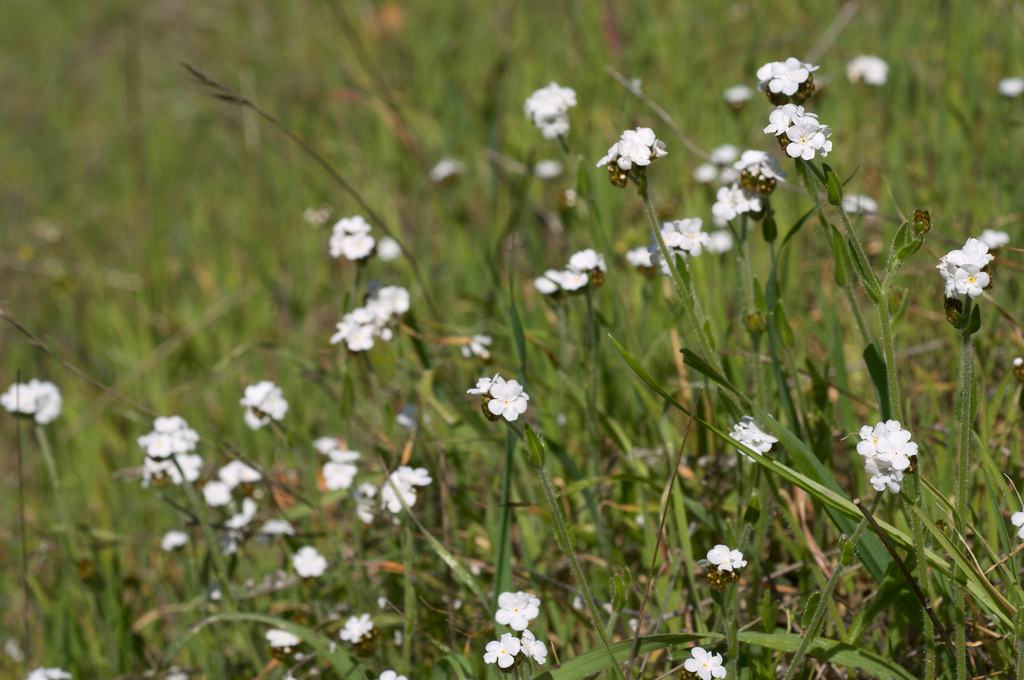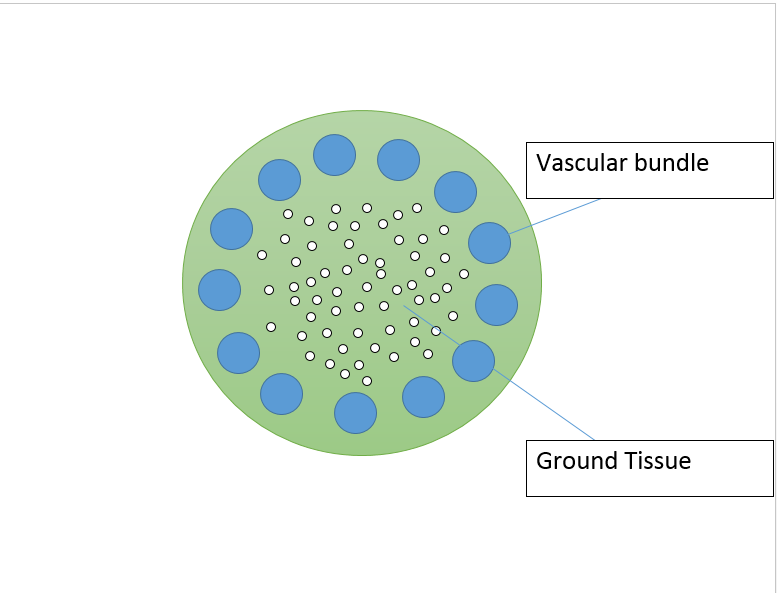Form and Function
Plagiobothrys nothofulvus, also known as the popcorn flower, is
native to northern California. It can be found in many grassy
meadows or fields, and has a slender hair stem that can grow from
6 to 20 inches high (Royo 2012). It has small, white, five-petaled
flowers that grow up to one inch in size located at the end of its
stems. The flowers grow in coils and bloom February through June (Royo
2006). The flower
also has narrow leaves that grow from one to one and a half
inches; the higher the leaf is in the stem the smaller it tends
to be (Royo 2006). Plants can have anywhere from 50 to 100
blooming flowers at once. Each flower can produce four
tan-colored to black nutlets; lack of
pollination
causes the growth of calyces,the green outer set of floral leaves making up
the external part of the flower that consist of separate sepals.
They contain fewer than four nutlets and are observed often (Amsberry & Meinke
2001).
inch in size located at the end of its
stems. The flowers grow in coils and bloom February through June (Royo
2006). The flower
also has narrow leaves that grow from one to one and a half
inches; the higher the leaf is in the stem the smaller it tends
to be (Royo 2006). Plants can have anywhere from 50 to 100
blooming flowers at once. Each flower can produce four
tan-colored to black nutlets; lack of
pollination
causes the growth of calyces,the green outer set of floral leaves making up
the external part of the flower that consist of separate sepals.
They contain fewer than four nutlets and are observed often (Amsberry & Meinke
2001).
 Plagiobothrys nothofulvus is a dicot (Calflora 2014). This
classification is distinguished by flower parts in divisions of 2,
4, or 5 (popcorn flowers have 5 petals). Dicots also feature
one main taproot, two cotyledons inside their seeds, and vascular
stem tissues arranged in a ring (UC-Clermont Biology 2014).
Plagiobothrys nothofulvus is a dicot (Calflora 2014). This
classification is distinguished by flower parts in divisions of 2,
4, or 5 (popcorn flowers have 5 petals). Dicots also feature
one main taproot, two cotyledons inside their seeds, and vascular
stem tissues arranged in a ring (UC-Clermont Biology 2014).
The popcorn flowers have very deep root systems which range in size depending on the terrain the plant lives in. In wet, marsh-like areas the plant will have very short roots. However, some desert inhabiting flowers have extremely deep roots to help them absorb water from deeper layers of soil. Like all angiosperms, the popcorn flower goes through sexual reproduction, producing pollen that is transported to other plants through insects and animals.
To learn more about how insects and animals interact with Plagiobothrys nothofulvus to distribute pollen, check out the Interactions page!
Home Move on to learn about Reproduction!